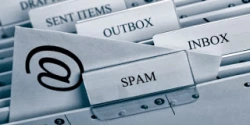 Once your email subscribers open your promotional emails, your email messages need to quickly tell them why they should click through to your website and fulfill your request.
Once your email subscribers open your promotional emails, your email messages need to quickly tell them why they should click through to your website and fulfill your request.
Easier said then done!
First, congratulations on getting your email opened. Now, let’s focus on how you can craft engaging content for your email marketing messages.
According to an Email Benchmark Survey conducted by Marketing Sherpa, 68% of firms say delivering relevant content for their email messages is a top priority. However, only 28% of organizations report sending relevant email communications.
If you prepare email marketing messages with the tips discussed today, you will be able to create relevant and engaging email messages that will increase your click through rates and conversion rates.
Tips to Create Relevant and Engaging Email Marketing Messages

- Be Human
- Personalization
- Educational
- Entertaining
- Timely
1. Being Human
- Write the content as if you are writing an email to a friend.
- Make the content light and get rid of that corporate tone.
- Make it conversational.
- When applicable, empathize with your email subscribers.
2. Personalize your Email Message
- Use your email subscriber’s name in the subject line or message.
- Use dynamic content to insert blocks of content that is tailored to your email subscribers personas.
- In The Definitive Guide to Engaging Email Marketing from Marketo, the guide provides an example where a company received a 175% lift in conversion rates when the company used dynamic content.
3. Educational
- Teach your email subscribers about your brand’s benefits.
- Include a testimonial from your customers.
- Provide statistics about customers who used your brand.
- For repeat purchases, provide tips in using your brand.
- No Hard Sells – Hard selling will alienate your email subscribers.
4. Entertaining
- Your email messages should leave your email subscribers with a smile or feeling good.
- Even if your email subscriber does not respond to your email marketing message, leave them with something valuable.
5. Timely
- Tie real-world events or industry news to what is going on in your email message. For B2B email messages, I’ve had success in tying industry news to the content of my email messages.
- Any upcoming calendar events to mention in your email? For example, since many families travel during the summer, a luggage store may want to send an email marketing promotion with travel tips plus a discount on a purchase.
- A Word of Caution – Be sensitive if real-world events negatively impact your email subscribers or if your email subscribers don’t participate in certain holidays.
Example of an Engaging Email Message
Recently, I received a promotional email from a colleague about purchasing her household organizational services. The email message discussed preparing tax documents for Tax Day, April 15th, and organizing tax and any other paperwork lying around the house.
The email mentioned the dreaded event and reminds you of something that you have to do. Her suggestion of taking the time to review and organize all your paperwork makes sense, so she plants the idea of organizing in your head. Then, she mentions the offer to hire her services in helping you organize the papers around your house.
How does the example compare to the 5 tips to create engaging email marketing messages?

- The email was human by empathizing with her email subscribers about April 15th.
- The email was personalized when it included my first name.
- The email educated me by mentioning the suggestion to organize my tax documents and my other paperwork.
- The email entertained me by making me happy with the thought of having a nicer home if I organized all my papers.
- Lastly, the email was timely by mentioning the preparation for April 15th.
Conclusion
After you write your next email marketing message, do a check like I just did. Identify the points in your email message that comply with all 5 tips to help you create engaging email marketing messages.
Now, you have what it takes to deliver compelling email messages. Just apply these tips when writing your email content.
When you create engaging content, not only will your content be relevant and timely, you will increase your click through rates and conversion rates.
Keep this blog post to to guide you through the writing process for your next email marketing promotion.
For tips on creating engaging subject lines, check out my email subject lines blog post.
Source
- Email Marketing: 3 Tips for Producing Engaging Email Content Slideshow from Marketing Sherpa
- The Definitive Guide to Engaging Email Marketing from Marketo
Email Marketing Promotion News and Resources
- 3 letters to drive subject line success from Marketing Experiments
- 6 Tips to Make Email Marketing Engaging from Digital Doughnut
- Email Messaging Tested – A recent experiment reveals the two words that increased email click through by 13% Video from Marketing Experiments
- The Most Commonly Used Email Marketing Tactics from Marketing Profs
- 7 Facts About Responsive Email on Mobile You Need to Know in 2014 from ClickZ
- 6 Things To Watch For Better Gmail Deliverability from Marketing Land
 Since only 82% of emails from our email marketing efforts reach the inboxes of our email subscribers, Digital Marketing Manager and Email Marketing Managers need to explore how to improve delivery of email marketing messages to email subscribers’ inboxes to obtain revenue goals. (Source: Return Path’s
Since only 82% of emails from our email marketing efforts reach the inboxes of our email subscribers, Digital Marketing Manager and Email Marketing Managers need to explore how to improve delivery of email marketing messages to email subscribers’ inboxes to obtain revenue goals. (Source: Return Path’s 

 To establish engagement with your email subscribers, Digital Marketing Managers and Email Marketing Managers need to maintain high quality email lists. By removing inactive email subscribers, you can maintain a high quality email list, increase deliverability, and establish engagement.
To establish engagement with your email subscribers, Digital Marketing Managers and Email Marketing Managers need to maintain high quality email lists. By removing inactive email subscribers, you can maintain a high quality email list, increase deliverability, and establish engagement.







 One of the many things I have read includes
One of the many things I have read includes  3. Conversational – the content of your email marketing efforts should spark a two-way conversation between you and your target audience. You can do this by listening to your audience, adapt to their changing needs, and tell engaging stories. Segmenting your lists and using dynamic content will help you achieve this attribute.
3. Conversational – the content of your email marketing efforts should spark a two-way conversation between you and your target audience. You can do this by listening to your audience, adapt to their changing needs, and tell engaging stories. Segmenting your lists and using dynamic content will help you achieve this attribute.